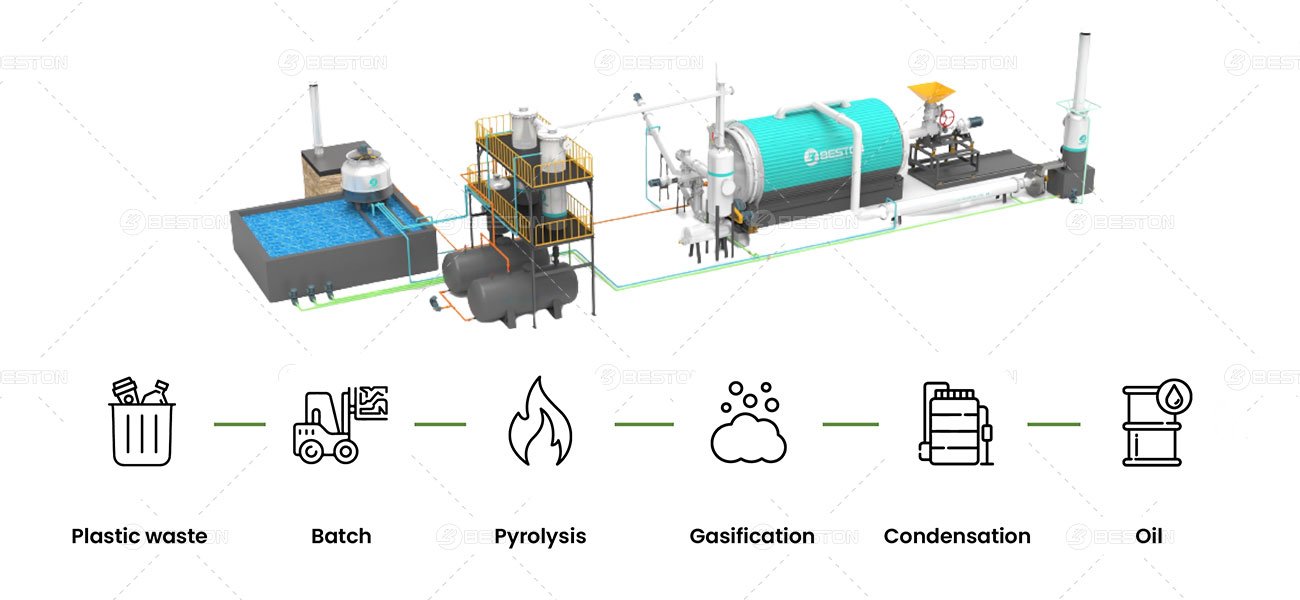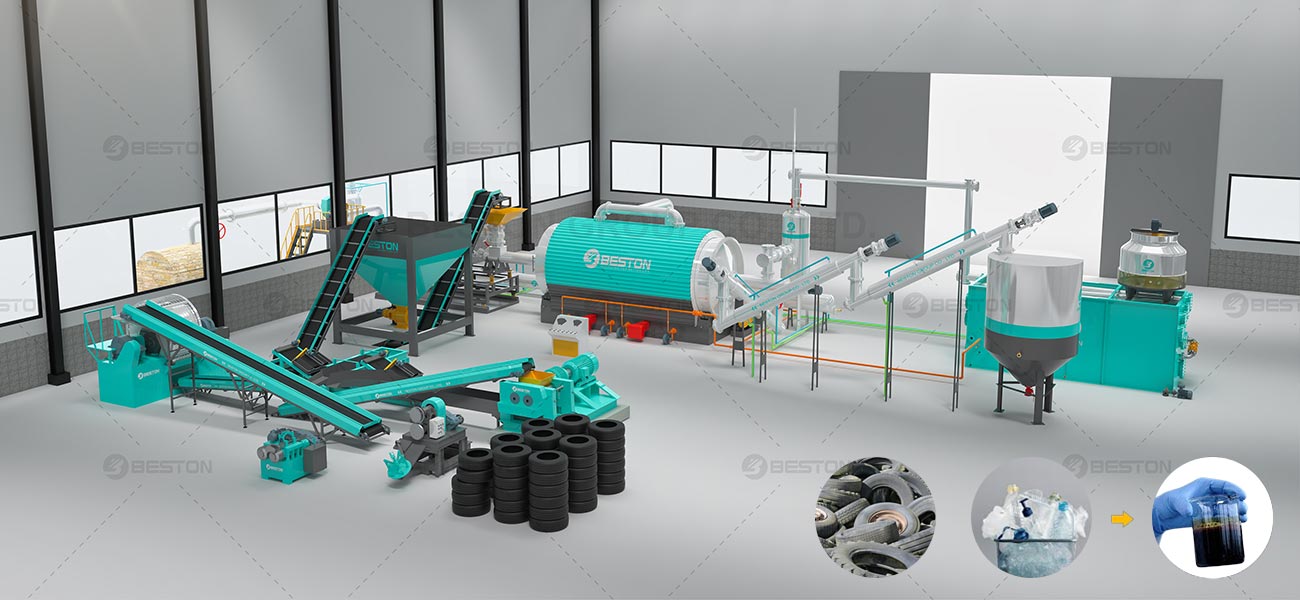Plastic waste has become an environmental leviathan, choking our oceans, filling our landfills, and littering our landscapes. In response to this escalating crisis, the plastic pyrolysis plant project emerges as a beacon of innovation, transforming waste into a viable energy source. This plastic pyrolysis plant project report delves into the intricacies of this transformative technology, elucidating its processes, benefits, challenges, and potential impact on both the environment and the economy.
Overview of the Plastic Pyrolysis Process
At its core, the plastic pyrolysis process involves the thermal degradation of plastic waste in an oxygen-free environment. The absence of oxygen prevents combustion, allowing plastics to break down into smaller, more useful molecules. These molecules are then condensed into liquid hydrocarbons that can be refined into various types of fuel, such as diesel, gasoline, and kerosene. The plastic pyrolysis plant project report highlights the versatility of this process, capable of converting diverse types of plastic waste into valuable energy resources.

Key Components of the Pyrolysis Plant
The plastic pyrolysis plant comprises several critical components, each playing a pivotal role in the conversion process. The primary elements include:
1. Feeding System: This system ensures a continuous and controlled supply of plastic waste into the reactor. Proper sorting and preprocessing of plastic waste are crucial to enhance the efficiency of the pyrolysis process.
2. Pyrolysis Reactor: The heart of the plant, the reactor, operates at temperatures ranging from 300°C to 900°C. The reactor’s design and materials must withstand these extreme conditions while facilitating optimal thermal degradation of the plastic feedstock.
3. Condensation System: After pyrolysis, the vaporized hydrocarbons are cooled and condensed into liquid form. This system includes condensers and cooling units to efficiently convert the gas phase into liquid hydrocarbons.
4. Oil Storage Tanks: The resulting liquid hydrocarbons, or pyrolysis oil, are collected and stored in these tanks. Proper storage conditions are essential to maintain the quality and safety of the produced oil.
5. Gas Scrubbing System: To minimize environmental impact, this system cleans the non-condensable gases before they are released or reused within the plant. These gases can often be recirculated to fuel the pyrolysis reactor, enhancing the plant’s energy efficiency.
Environmental and Economic Benefits
The plastic pyrolysis plant project report underscores several key benefits, both environmental and economic, of this innovative technology:
1. Reduction of Plastic Waste: By converting plastic waste into fuel, plastic to oil plant significantly reduces the volume of waste that ends up in landfills and oceans. This alleviates the burden on waste management systems and mitigates the environmental harm caused by plastic pollution.
2. Energy Recovery: Pyrolysis not only addresses waste management issues but also contributes to energy production. The fuel produced from plastic waste can supplement traditional energy sources, reducing reliance on fossil fuels and lowering greenhouse gas emissions.
3. Economic Viability: The pyrolysis process offers a profitable solution for dealing with plastic waste. The sale of pyrolysis oil can generate substantial revenue, providing an economic incentive for investment in this technology. Moreover, the plant creates job opportunities in the areas of waste collection, plant operation, and fuel distribution.
4. Resource Efficiency: The process exemplifies a circular economy approach, where waste materials are repurposed into valuable products. This enhances resource efficiency and promotes sustainable industrial practices.

Challenges and Considerations
Despite its promising potential, the plastic pyrolysis plant project report identifies several challenges that must be addressed to ensure successful implementation:
1. Technical Complexity: The design and operation of pyrolysis plants require advanced engineering expertise. Ensuring optimal performance and safety involves managing high temperatures and pressures, which can be technically challenging and costly.
2. Feedstock Variability: The quality and composition of plastic waste feedstock can vary widely. Contaminants and mixed plastics can affect the efficiency and output quality of the pyrolysis process, necessitating thorough sorting and preprocessing.
3. Regulatory Compliance: The operation of pyrolysis machinery is subject to stringent environmental regulations. Compliance with emissions standards and waste disposal regulations requires ongoing monitoring and adherence to best practices.
4. Market Fluctuations: The economic viability of pyrolysis oil is influenced by fluctuations in global oil prices. Market instability can affect the profitability of pyrolysis plants, posing a financial risk to investors.
Future Prospects
The plastic pyrolysis plant project report envisions a future where pyrolysis technology plays a central role in sustainable waste management and energy production. Advances in catalyst development, reactor design, and process optimization are expected to enhance the efficiency and scalability of pyrolysis plants. Furthermore, increased public awareness and policy support for sustainable practices could drive wider adoption of this technology.
In conclusion, the plastic pyrolysis plant project report presents a compelling case for the integration of pyrolysis into modern waste management and energy systems. By transforming plastic waste into valuable fuel, this technology offers a pragmatic and innovative solution to some of the most pressing environmental and economic challenges of our time. As we continue to refine and expand this approach, the potential for a cleaner, more sustainable future grows ever brighter.